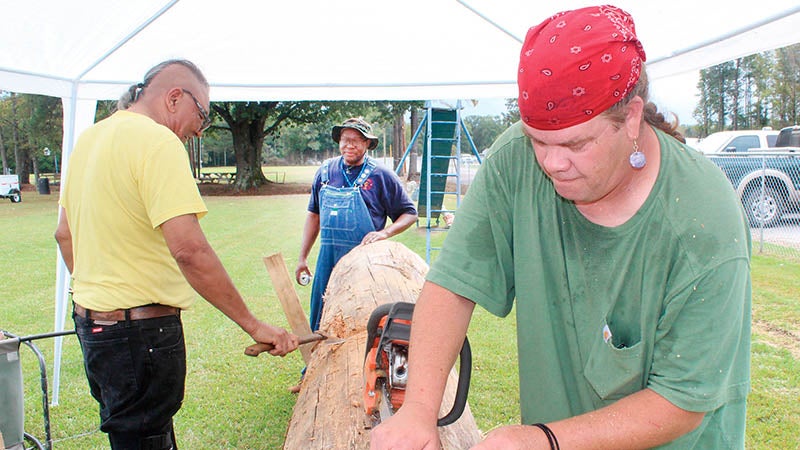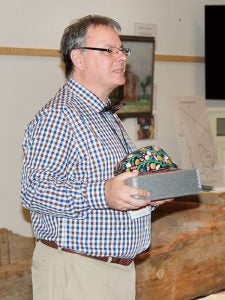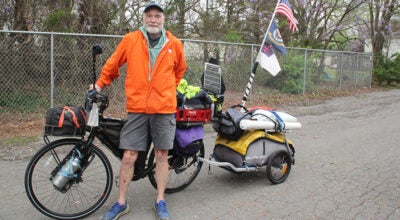300 years of Indian Woods
Published 12:13 pm Tuesday, October 17, 2017

- Native Americans Gary Oxendine (foreground) and Christopher Hardison of the Tuscarora Tribe begin carving a dugout canoe at the Blue Jay Recreation Complex on Oct. 7 as part of the Blue Jay-Indian Woods community’s Fall Heritage Festival. Staff Photos by Gene Motley
INDIAN WOODS – They even brought one of their Native American Tuscarora words back south from New York state.
Kanehare?kye.
Cane-Har-e-kay means ‘the month of March’ – or, planting season – in Tuscarora language, but this October it could also mean ‘celebration’.
For the second time in three years, members of the Tuscarora Reservation, located in upstate New York near Niagara Falls and the city of Buffalo, had come south to celebrate their heritage. Its significance was all the more relevant during the weekend of October 6-9 because of not just the Columbus Day holiday (or, Indigenous Peoples Day, as some celebrate it), but also because 2017 marks 300 years since the first Tuscarora are known to have settled in Bertie County.
The organizers titled the weekend: “The 300 Years of Indian Woods: 1717-2017”.
The Indian Woods reservation, at one time the largest known in the eastern continental United States, was located on the north side of the Roanoke River between Quitsna Swamp and Deep Creek in the southwestern corner of Bertie County. 300 years ago, in 1717, the northern band of the Tuscarora Nation moved onto the

David Serxner, volunteer for Programming and Education at Historic Hope Plantation displays a colorful Native American Glengarry cap worn by natives of the region in the 18th century during a presentation of ‘The 300 Years of Indian Woods’.
reservation after struggling to stay neutral in the Tuscarora War of 1711-1713. In that war, English forces killed or enslaved roughly a quarter of the Tuscarora Nation, previously the leading political, military and trading power in all of eastern North Carolina.
They called this part of Bertie County, “the Swampy Lands’.
Somewhere between the 1760’s and 1804, the Tuscarora in Indian Woods left not only Bertie County, but first moved south near the South Carolina state line to what is now Robeson County. Later the migration moved to the northern states, eventually settling on the Tuscarora Reservation in Niagara County, NY.
While Windsor’s Historic Hope Plantation hosted a gathering that included lectures and demonstrations of early Native American life, the Blue Jay community – now a part of modern-day Indian Woods on Indian Woods Road – hosted a Fall Harvest Festival on Oct. 7. Blue Jay incorporated within the Native American commemoration the culture of African-Americans who are now part of the region’s diverse history.
The gathering came about because of a unique collaboration among East Carolina University history professor Dr. Larry Tise; North Carolina A&T professor Dr. Arwin Smallwood and his family and friends in Indian Woods; and the staff and volunteers at Historic Hope.
During all-day lectures Saturday, Vince Schiffert, a native Tuscarora and language and culture teacher from the New York reservation, gave a presentation on Tuscaroran agriculture. Schiffert recounted trips he made to Windsor several times last summer so that he could tend a garden of corn, beans and squash– the “Three Sisters” in his native language – at the Plantation.
“I discovered Bertie County has a lot of raccoons,” Schiffert joked. “And they seem to have a fondness for Tuscaroran corn.”
More precisely, Schiffert stated, Kanehare?kye refers to lunar cycles, not a European calendar; and it also means the days roughly between mid-March and mid-April: corn-planting time.
“Kanehare?kye only makes sense if the word has its roots not in New York State, but in eastern North Carolina,” he acknowledged.
“Here I plant my corn in early April,” he stated. “Depending on the variety, you can plant even a little earlier some years, but not in Niagara County – nowhere close. They’re lucky to plant by the middle of May.”
So the Tuscarora word for the month of March, the word still used by Tuscarora speakers north and south, doesn’t have its origins in corn planting time. Rather, he said,
“The word evokes our ancestral home, and the place where the Tuscarora grew corn for more than a thousand years—the Swampy Lands.”
That one word made the depths of the connection between the old home and the new home come alive said one of the participants.
Later that evening, the homecoming came full circle as the Tuscarora were welcomed back home at a wild game dinner held at the Blue Jay Recreation Center in Indian Woods.


